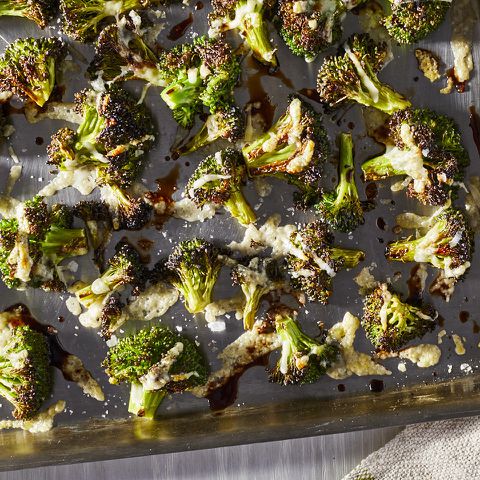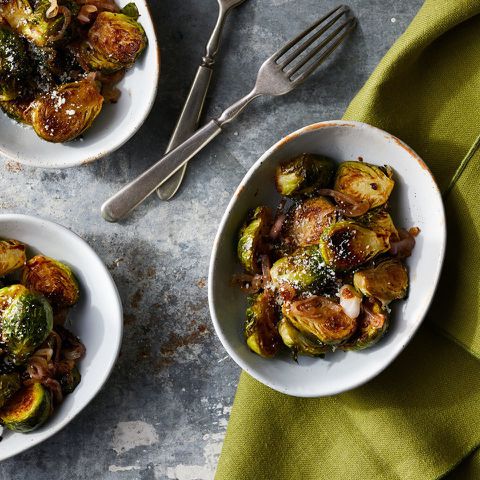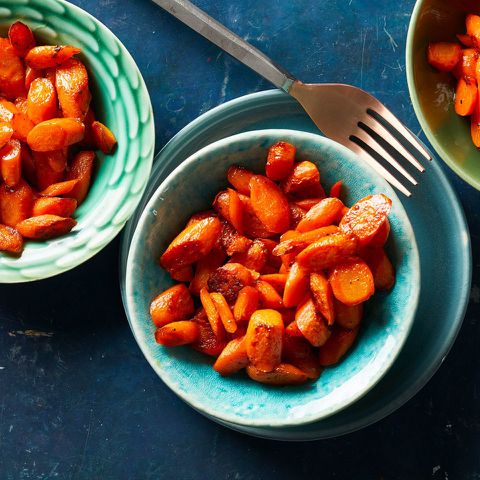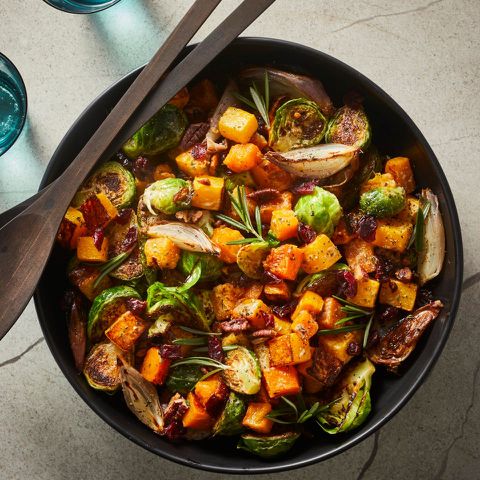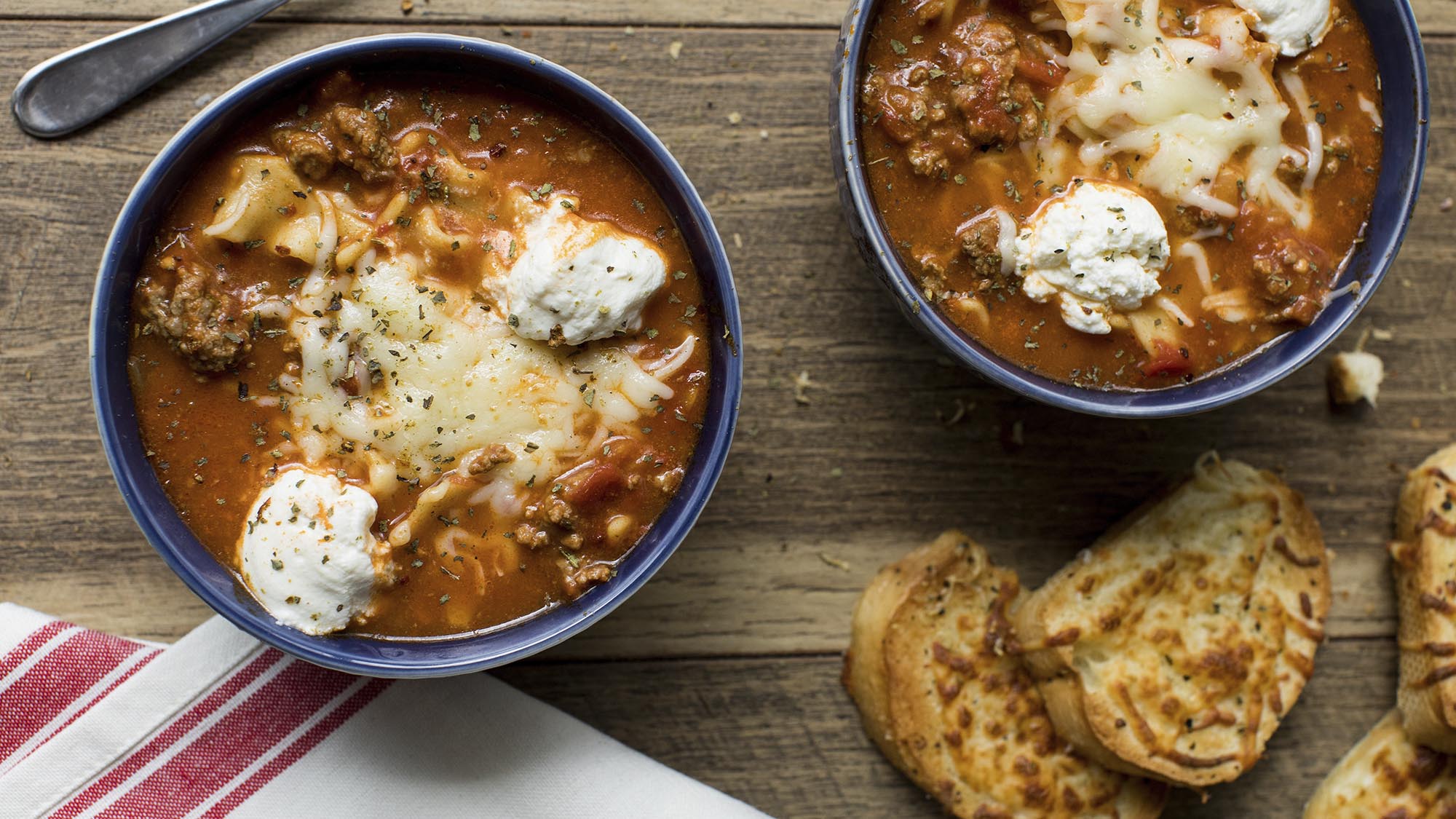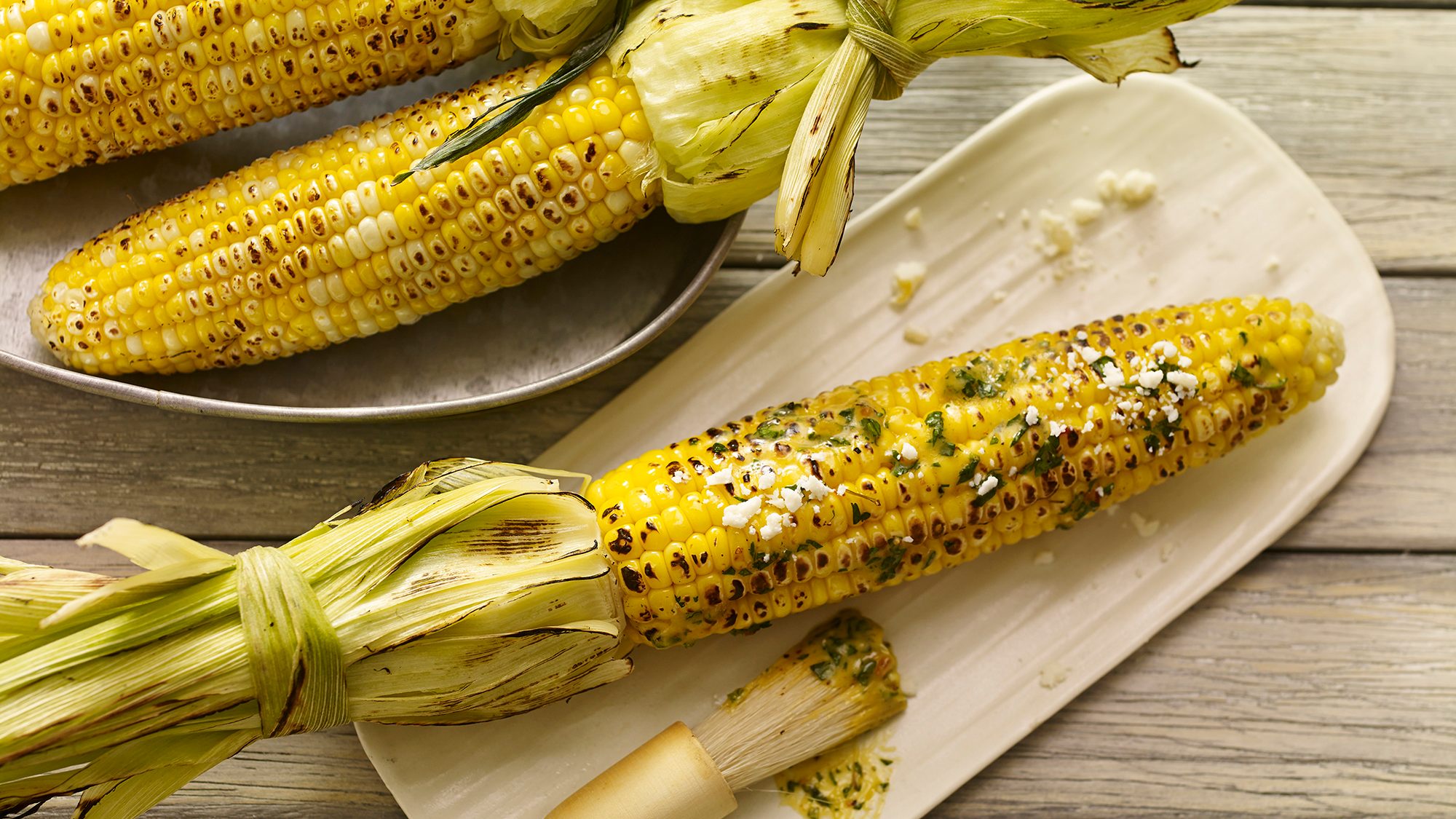It only takes 3 easy steps to make the best oven-roasted vegetables every time. They're delicious, healthy and perfect for a side dish on busy weeknights or when you need to feed a crowd. Learn this technique and you'll be able to roast any vegetable without a recipe.
Pictured recipe: Balsamic Oven-Roasted Carrots
I have a theory that the only reason people think they don't like vegetables is because they haven't been cooking them right. When you think of the vegetables you pushed aside in childhood, I bet you think of mushy Brussels sprouts, limp broccoli and soggy carrots. Mushy, waterlogged, limp veggies are a common result of steaming or boiling your vegetables. But if you crave vegetables that are crisp on the outside, soft on the inside with caramelized, browned edges, give roasting a try. When you cook at temperatures above 330°F, the delicious process of caramelization kicks in (when you steam, it doesn't get above 212°F). At those hotter temperatures the natural sugars in vegetables turn nutty and richly sweet, giving that brown and almost crispy exterior. It's my absolute favorite fail-proof method for delicious vegetables that everyone actually wants to eat.
How to Roast Vegetables
Step 1: Cut Your Veg
Pictured recipe: Colorful Roasted Sheet-Pan Vegetables
Whether you're roasting delicate red onions or hardy parsnips, for even cooking make sure you cut the vegetables into equal-size pieces. Smaller pieces cook faster, but cutting large pieces ensures you don't overcook or burn your vegetables. Whichever size you choose, just make sure they're all the same so you don't end up with some undercooked vegetables and some that are burnt.
Step 2: Add Some Flavor
Pictured recipe: Balsamic & Parmesan Roasted Broccoli Recipe
Before cooking your vegetables, decide how you want to season them. It's always best to toss the veggies with a little oil and seasoning (at least 1 tablespoon of oil for each baking sheet of veggies) before they cook so they don't stick to the pan. Bonus, the fat helps you absorb some vitamins (fat-soluble vitamins A, D, E and K) in your vegetables. For foolproof delicious roasted vegetables every time season with salt and pepper and some garlic powder before roasting, but feel free to try out other dried herbs and spices too. Adding balsamic vinegar or another sauce is a great way to add flavor too. You'll want to add most sauces after your vegetables cook, unless you're following a recipe that says otherwise.
Step 3: Use the Right Pan
Pictured recipe: Parmesan-Balsamic Roasted Brussels Sprouts
Next, spread the cut vegetables in a rimmed baking sheet or roasting pan. Make sure your pan is big enough to spread the vegetables out evenly in a single layer with a little space between each piece. You don't want to overcrowd the pan, if you think the pan is too crowded, split the vegetable between two pans. Crowded vegetables just create extra moisture and steam in the pan.
Step 4: Roast at High Heat
Pictured recipe: Maple Roasted Carrots
The temperature that is best for roasting veggies may be higher than you think. For perfectly-roasted tender vegetables with a golden crust, preheat the oven to 450°F oven and use the lower third of your oven. If you are using two pans, put one in the lower third and the other in the upper third of your oven and swap them halfway through. This ensures your veggies are cooking closest to the heat source, so they're cooking at the highest heat possible.
There is no need to cover vegetables when roasting. Covering them creates steam, so they won't get as crispy and caramelized. Don't forget to stir once or twice while cooking so the vegetables get nicely browned on all sides. Other than that, you can't really go wrong. The timing for each vegetable will vary slightly and will depend on how big the pieces are, but plan for 20 minutes or so and check about every 10. Your vegetables are ready when they are golden brown and can be easily pierced with a fork. You can even mix and match vegetables—just make sure they have similar cooking times, or get ones with longer cooking times going first then add other vegetables accordingly.
Best Vegetables to Roast
For starters, most any vegetable that you would cook can be roasted. There are some foods, however, that become flavor superstars after a trip in the oven. Cruciferous vegetables, such as broccoli, Brussels sprouts or cabbage, get a little bit sweet. That natural sweetness helps balance out their natural bitterness. Root vegetables—think parsnips, carrots, and potatoes—have their sweetness enhanced as they get roasty toasty.
Though it is most popular in the cold weather, you can roast vegetables at any time of the year. Here are some of our favorite seasonal vegetables to roast:
Fall:
- Onions
- Carrots
- Potatoes
- Sweet potatoes
- Beets
- Fennel
- Butternut squash
- Green beans
- Mushrooms
- Brussels sprouts
- Broccoli
- Cauliflower
Winter:
- Winter squash
- Turnips
- Parsnips
- Carrots
- Beets
- Potatoes
- Sweet potatoes
- Onions
- Mushrooms
- Brussels sprouts
- Cabbage
Spring:
- Asparagus
- Leeks
- Broccoli
- Scallions
- Radish
- Snap peas
Summer:
- Zucchini
- Summer squash
- Tomatoes
- Eggplant
- Green and red bell peppers
- Green beans
This article was written by Devon O'Brien from EatingWell and was legally licensed through the DiveMarketplace by Industry Dive. Please direct all licensing questions to legal@industrydive.com.




